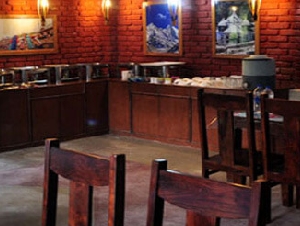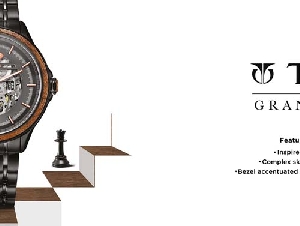
Sai Sandhya Dwarka Band Services
विवरण
Sai baba of Shirdi is revered as one of the greatest saints that India ever had. Worshipped as God incarnate, Saibaba had his sole mission to give blessings to one and all with only one message that “God is One??his message was, do not worry about the cast as we all are child of one God.
Sai Sandhya is performed to thank Sai for his blessings and all the love he has bestowed upon us. It is believed that one who come to Sai Baba with a pure heart never returns empty handed.
There are distinct categories of singing styles prevalent in the diverse culture of India. Devotional songs in northern part of India fall into several popular categories like Bhajan, Quwali, Bhent, Mantra (snippets in sanskrit), Shlok (snippets in sanskrit and other languages), Kirtan etc.
In a Sai Sandhya, the Sai is invoked by singing aloud the devotional songs and invited to grace the gathering with his presence.
Sai Sandhya and Arti
Aarti is a form of worship by which the devotee is able to express his devotion to the Lord. Baba's Aarti is sung in all languages. The Aarti has become popular in all the temples of Sri Sai all over India as it has the power to lead one to the highest state of ecstasy. At the start of the aarti, a lamp with five wicks is lit. Light produced by fire is considered splenderous and wards off Spirits.
Aarti, accompanied by hymns and music, wards off negative influences obstructing the practise of the devotee. Therefore, the aarti is a significant part in Sai worship. According to the guru tradition, the relationship and bond between the guru and the disciple is the very heart and essence of the path of love. To the common man, Sai Baba is the living manifestion of the abstract concept of God, from whom he seeks protection, guidance and support. This yearning that has created a bond of love and faith between Sai and his devotee, is expressed through the aarti/bhajan.
Understanding Sai Baba
Baba always maintained the "Dhuni" or the perpetual fire. The realisation that all the phenomenons of the nature are perishable and unworthy of our craving, is signified by "Udi" which Sai Baba distributed to all. Baba never left Shirdi. He talked to people who came to see Him. Sai Baba would often speak in symbols and parables leaving his devotees to work out the answer - such as:
"A man had a beautiful horse, but no matter what he did, it would not run in harness. An expert suggested that it should be taken back to the place from where it had come. This was done and it becomes traceable and useful".
The explanation of this story is that the horse is the Ego. As commander of the physical and mental powers of man, it is useful but self-willed and therefore causes endless trouble. Taking it back to its source is re-absorbing it in the spirit source which it arises. It is the return to the source which purifies and enlightens. From there the ego issues forth again, no longer an ego, but a conscious agent of the spirit.
Baba would ask for Dakshina (money offered with respect to the Guru) from some of those who came to see Him. This was not because he needed their money. This was one of Baba's methods for testing out the devotee's attachment to worldly things and willingness to surrender his ego. Once one has surrendered himself totally to him, Baba takes care of all his spiritual and temporal needs.
Baba regarded money like everything else, in a symbolical manner. He once said:
"I ask only from those who the fakir (God) points out and in exchange I give them ten times as much".
By the end of the day, all the money Baba had earned was distributed to the destitute, poor, sick and the needy. Baba used to feed the fakirs and devotees and even cook for them. For those who were accustomed to meat, he cooked meat and for the others vegetarian fare.
The Dwarakamayee of Sai Baba was open to all, irrespective of caste, creed or religion. Among those who came to see him and got his darshan (establishing spiritual contact with the Guru) and blessings were ministers, government officials, business people and village folk. He was the common man's God. He Stayed with them, hejoked with them, He slept and ate with them, he smoked a chillum (pipe) with them, he sang and danced with them, having no pretensions of a God. But all of them knew that He protected them. Even today, though he has left his gross body, they feel his presence and realise his worth all the more.
Baba would also refer to the sounding of the drum of the beginning of eternity within the soul. This "anahat" sound emerged from Baba's heart from every limb, every bone and pore of his body. It was permeated with divine essence and Baba claimed that though one day his physical body will not exist, his remains will communicate with from the grave. Therefore, the most important place in Shirdi is Baba's temple - the Samadhi Mandir is his grave, which literally millions have visited and still continues to draw many more.
मानचित्र पर स्थान
दिशा मिल| पता | Anil Gupta B-12, BASEMENT, MAHARAJA AGRASEN PLAZA, MAIN ROAD, MAHAVIR ENCLAVE, SECTOR-1, DWARKA (NEAR SBI AND ICICI ATM) NEW DELHI-110045, Dwarka Sector 1, 110045, India |
|---|---|
| ईमेल | info@saisandhya.co.in |
| फोन | +91 981 032 4895 |
| वेबसाइट | http://saisandhya.co.in |
व्यापार ईमेल भेजें

टैग
सामाजिक लिंक
खोज
हाल के पोस्ट
-

Wedcor India
शहर: Dwarka Sector 12 -

Chakrata Camps Dwarka
शहर: Dwarka Sector 12 -

Tripxps Dwarka
शहर: Dwarka Sector 19 -

Mobile Mart
शहर: Dwarka Sector 12 -

Titan
शहर: Dwarka Sector 5




